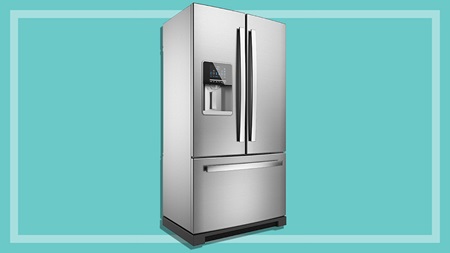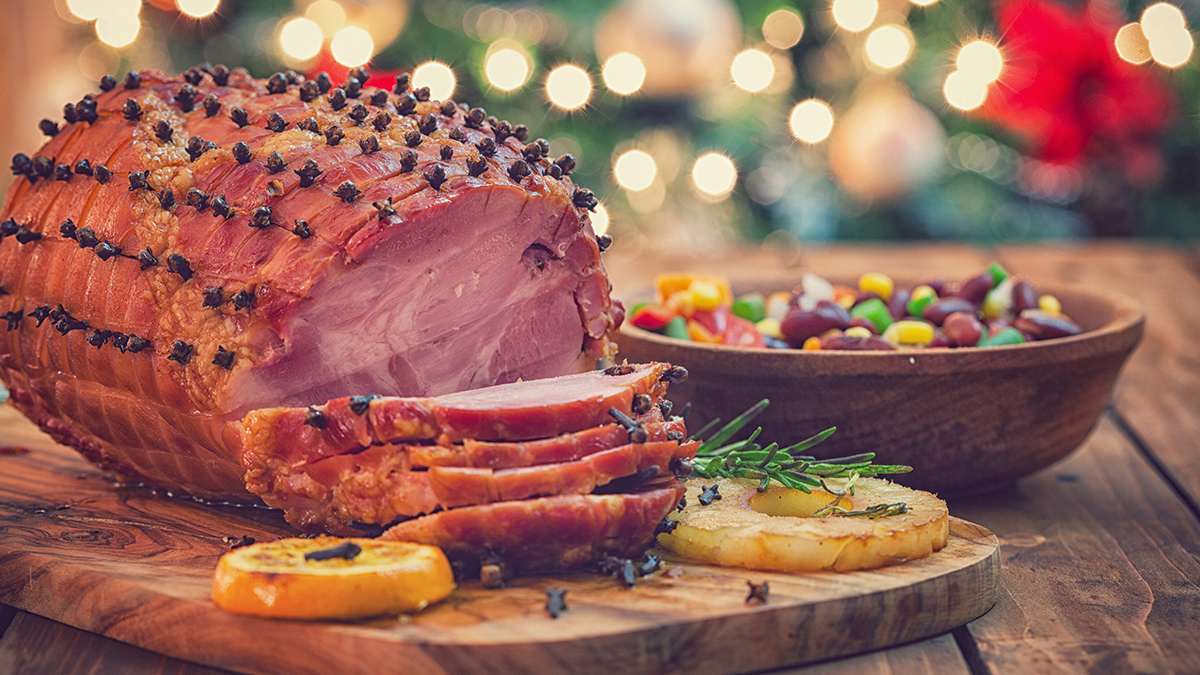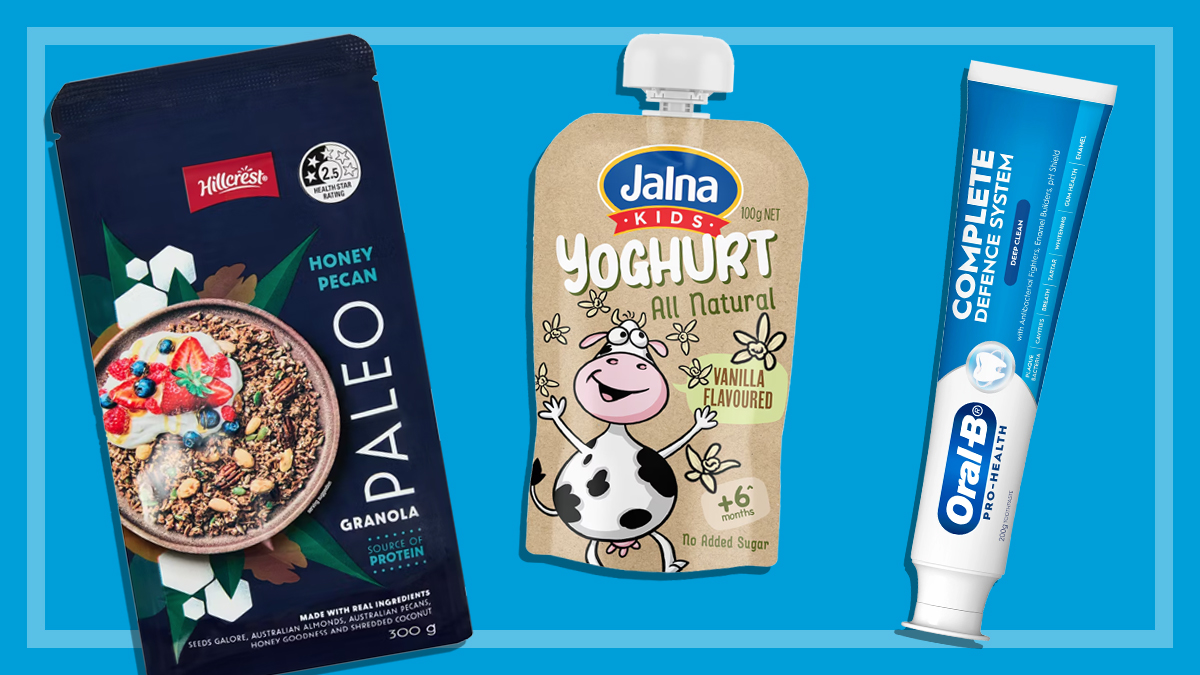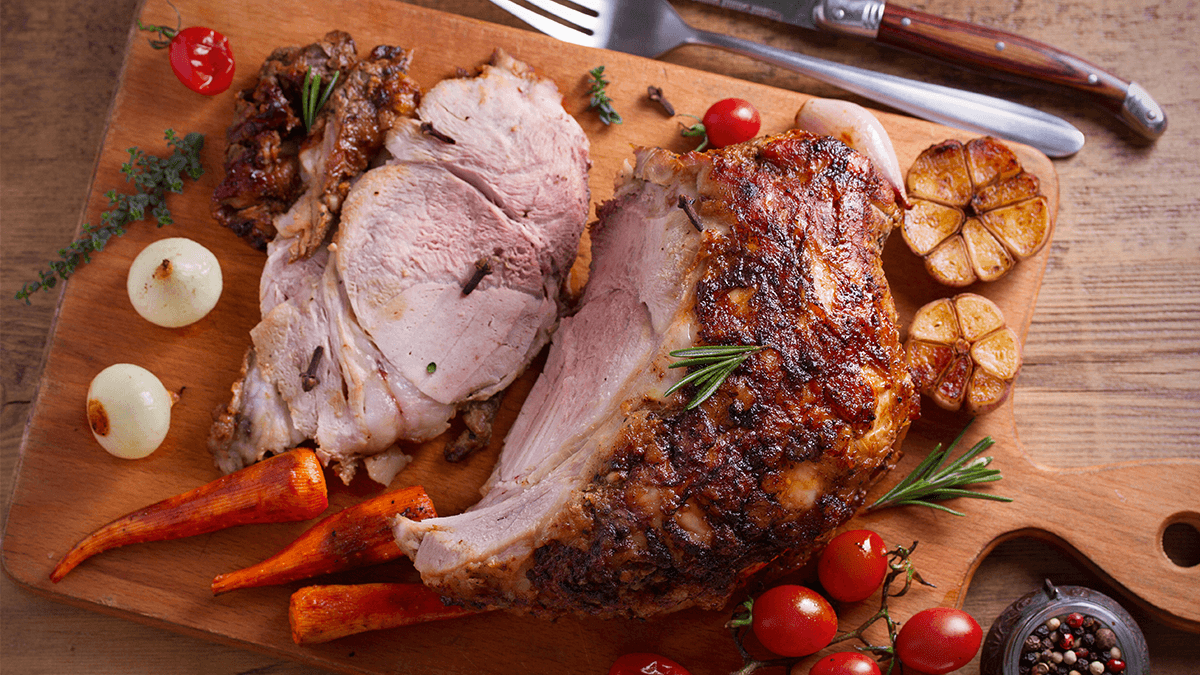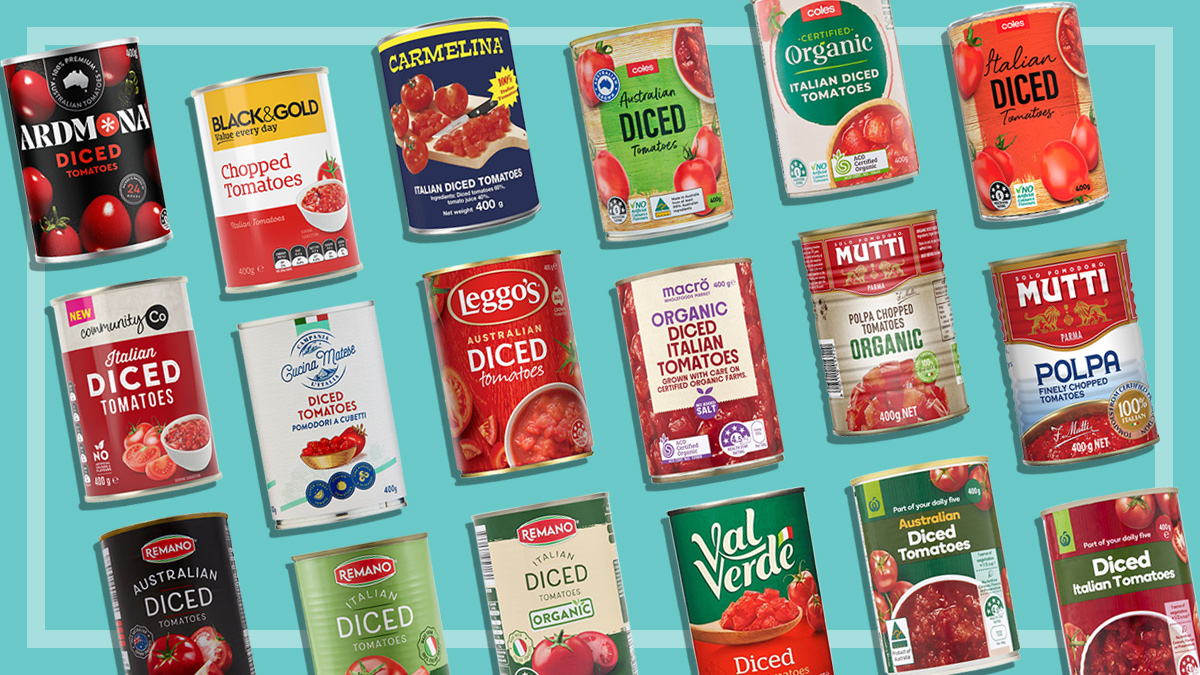Get our independent lab tests, expert reviews and honest advice.
How to avoid food poisoning
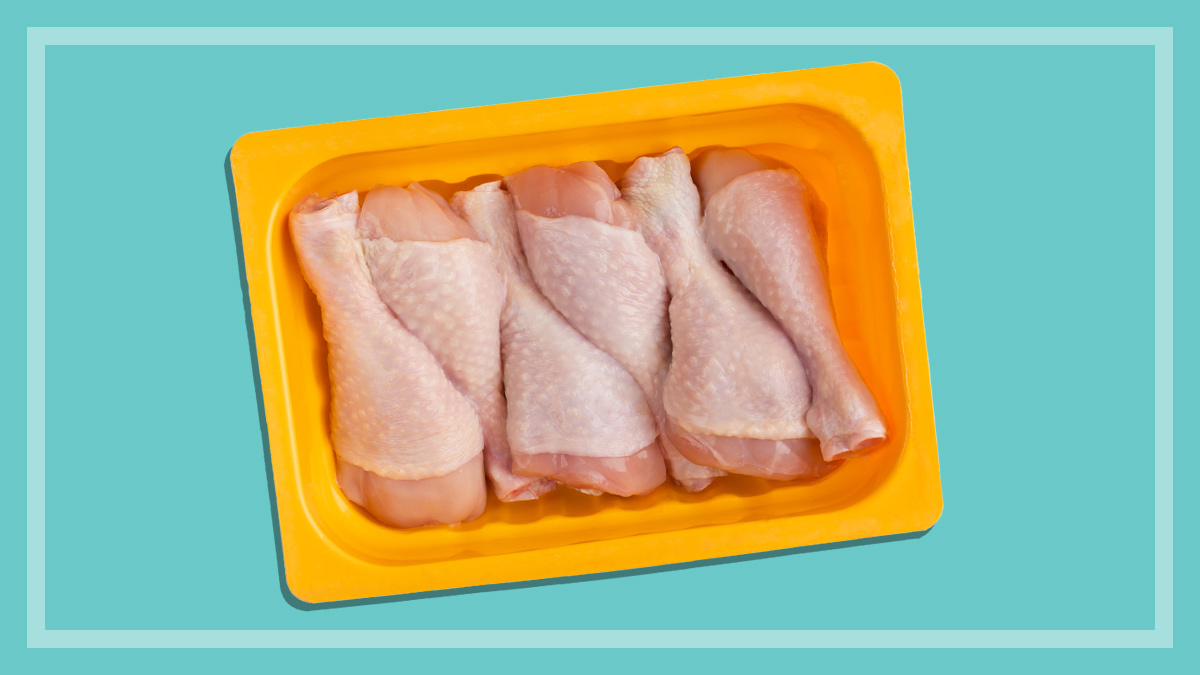
Nausea, vomiting and diarrhoea are generally not anyone’s idea of a good time, but the 4.1 million Australians who come down with food poisoning every year experience such symptoms. And it’s not uncommon for the cause to be home-cooked food!
On this page:
- Three top rules to avoid food poisoning
- How to avoid buying spoiled food from the supermarket
- How to avoid food poisoning when eating out
- Use-by dates explained
- The different types of food poisoning
- Can I eat it? FAQ

Three top rules to avoid food poisoning
Whether the food comes from your kitchen or the local café, the basic rules of avoiding uninvited guests such as Escherichia coli O157 H7 (better known as E.Coli) or Bacillus cereus are the same.
1. Avoid the temperature danger zone
Bacteria thrive at temperatures between 5°C and 60°C. In ideal conditions, their numbers can multiply and reach dangerous levels in just a few hours. So, store cold food below 5°C and hot food above 60°C. See our fridge temperature guide for more details on safe food refrigeration.
2. Avoid cross-contamination
At home, the most likely sources of harmful bacteria are raw meat and unwashed fruit and vegetables. Don’t let raw meat or juices come into contact with food that’s going to be eaten uncooked or defrosting meat drip onto other food in the fridge. Always wash your hands before starting to prepare food – and wash them again after handling raw meat.
3. When in doubt, toss it out
Most food-poisoning bacteria and their toxins have no taste or smell. The smell of putrefaction is usually due to relatively harmless bacteria called pseudomonas. So it might not be obvious that food’s contaminated. See our FAQs on what’s safe to eat (below) for the answers to your commonly asked dodgy-food-in-the-fridge questions.
How to avoid buying spoiled food from the supermarket
We’d hate to think Australia’s big (or little) supermarkets aren’t always practicing due diligence when it comes to food safety, but an ounce of prevention is definitely worth a pound of cure when you’re filling up your trolley.
Food safety tips
What to watch out for at the supermarket
- Frozen chicken that’s slightly soft to touch and has begun to thaw. If it looks ‘dented’, it may have been thawed and refrozen.
- Frozen vegies (such as peas or corn) which are frozen into a solid mass. They’ve probably been semi-thawed and refrozen. (Spinach is the exception.)
- Frozen food cartons that are wet, damp or sag in your hand.
- Frozen foods that are stacked above a horizontal freezer’s ‘load line’ (usually a blue or black line with the words ‘load limit’ written above it). They may be at too high a temperature.
- Swollen cans, or dairy products (like yoghurt) with the foil cover bulging. They may be going off.
- Leaking cartons, cans, bottles or other containers.
- Products with broken or imperfect seals or badly dented cans.
- Vacuum-packed products that aren’t tightly packed, with the packet loose around the product.
- Mould on foods such as cheese and crumpets.
- Check use-by dates and dates of packing, particularly on meat and dairy products.
- If you find frozen or chilled foods left standing unattended in the aisle, go to another store.
- Shop last for chilled and frozen food and pack meat products separately.
- If you find things wrong in your local store report it to the store manager. If they don’t take action, shop elsewhere next time and let your local authority know.
How to avoid food poisoning when eating out
Avoiding contaminated food in a restaurant can be especially tricky. The place may look squeaky clean, but that doesn’t mean it is. If it looks like hygiene is not high on the list, however, it probably isn’t.
What to watch out for
- Dirty floors, counters and tables – they can carry bacteria and attract pests. If people can’t keep their premises clean, chances are they don’t do much better with the food.
- Staff with dirty hands or fingernails, dangling jewellery and long hair not tied back.
- Staff wiping surfaces or equipment with a non-disposable cloth – or not disposing of it afterwards. Just because a cloth looks clean doesn’t mean it is.
- Staff using the same set of tongs for different types of food – for example, salads and meat.
- Staff not washing their hands after handling raw meat.
- Wearing the same gloves when handling different foods or handing you your change and docket – this defeats the purpose of gloves.
- Dirty crockery, cutlery or glasses – including chips and cracks.
- Lukewarm foods that should be hot and cold foods that aren’t quite cold. Hot foods should be kept above 60°C (steaming hot) and cold foods below 5°C to stop most bacteria from multiplying.
- Unrefrigerated pre-packed sandwiches.
- Foods that aren’t cooked right through – watch out for pink bits in the centre of hamburger meat and pink uncooked chicken (particularly near the bone).
- Raw and cooked foods, such as salads and meats, touching each other in display units.
- Food displayed uncovered or unwrapped on counters.
- Condensation dripping from display cabinets onto foods.
Use-by dates explained
Foods that have a use-by date should be eaten or frozen before the end of the date shown. You shouldn’t eat them after this date and it’s illegal for shops to sell foods once a use-by date has passed.
Foods that have a best-before date are less perishable, and this date gives a guide to how long you can expect the food to keep its quality (not safety). It’s OK to eat (and sell) these foods after the date has passed. Use your common sense – although they’ll often be perfectly acceptable, they may sometimes not be as good-quality as they once were.
Bread can have a ‘baked on’ date or even a ‘baked for’ date, instead of a best-before date.
All dates only apply if the food has been properly stored and transported, so if the packaging looks damaged or otherwise suspect, give it a miss.
The different types of food poisoning
We’ve used the term “bacteria” here to refer to the micro-organisms that grow on food and can infect anyone who eats it. Strictly speaking, these harmful bacteria are known as “pathogens”. Many other bacteria are harmless.
The symptoms of “food poisoning” are sometimes caused by toxins produced by bacteria and other times caused by bacteria themselves infecting the body. The most common symptoms are vomiting and diarrhoea, usually preceded by abdominal cramps and sometimes a headache.
Usually it takes large numbers of food poisoning bacteria to cause illness, as our body’s natural defences can usually take care of most smallish invasions. But infants, babies and people with weakened defences (such as those who are already sick, the elderly and those on immunosuppressive drugs) are much more susceptible. Preparing food for anyone in these categories demands extra care.

In Australia, the bugs that commonly cause problems are:
Salmonella
Just one drop of contaminated chicken juice can make you very sick. It usually strikes within 8 to 72 hours of eating contaminated food. You’re likely to feel really awful for a couple of days, and may not fully recover for weeks.
Clostridium perfringens
Likely sources in the home are meat, poultry dishes, casseroles and the like that are cooled slowly and inadequately refrigerated. It can cause intense abdominal cramps and diarrhoea that begin 8 to 22 hours after eating the contaminated food. The illness is usually over within 24 hours.
Vibrio parahaemolyticus
It’s often caught from seafood produced in warm coastal waters. Oysters and other seafood eaten raw are a likely source. The illness is usually mild or moderate and lasts about two to three days.
Staphylococcus aureus
Staphylococcus aureus from the human body can grow and produce its toxin in foods like home-made pasta and fermented sausage – typically foods that get a lot of handling during preparation. Wash your hands!
Campylobacter
This is usually caught by eating contaminated poultry that’s not adequately cooked. It’s mostly spread by cross-contamination, and just low numbers of the bacteria can cause illness, with similar symptoms to salmonella. The effects will last for several miserable days.
Bacillus cereus
This can be a problem in cereal-based products, mashed potato, vegetables, minced meat, liver sausage and soups, and it’s often associated with fried or boiled rice. There are two forms of poisoning, caused by two different toxins. A fairly mild form that presents with diarrhoea develops within 8 to 16 hours and usually lasts for about 24 hours. A more severe form starts within 30 minutes to 5 hours of infection and generally lasts for less than 24 hours. It produces nausea and vomiting and occasionally abdominal cramps and/or diarrhoea as well. It’s often associated with fried or boiled rice.
Escherichia coli (E. coli)
E. coli don’t often cause illness, but the bugs are very common. They are found in the guts of animals, including humans. Most E. coli are harmless and normally serve a useful function in the body by suppressing the growth of harmful bacteria and by producing appreciable amounts of vitamins. But the presence of E. coli in food is an indication of faecal contamination and the possibility of the presence of far worse bacteria that could cause serious illness. Unfortunately not all E. coli are harmless. The strain E. coli O157 is particularly dangerous for two reasons. Doses of just a few cells can result in illness, and the toxin it produces is extremely potent, causing anything from mild diarrhoea to serious urinary and gastrointestinal complications, including internal bleeding. As with other strains of E. coli, E. coli O157 is normally found in cows’ and other animals’ guts and gets into meat in the abattoir. It’s a relatively new type of infection, first recognised in Canada in 1985.
Can I eat it? FAQ
A: Mould on cheese can be tricky – some, like blue cheeses and the rind on camembert, are obviously meant to be mouldy. But when it comes to small mould patches on normally-not-mouldy hard varieties, you need to be able to cut away at least a 1cm chunk under and around the mould because it may have penetrated further than you can see.
Always throw away any food that’s very mouldy. Cutting or scooping the mould off soft cheeses is very risky – its invisible threads can go well below the surface. It’s safest to chuck them, as the moulds can produce toxins that can damage your liver, kidneys and immune system.
A: The same goes for all soft foods like these, other processed foods and soft fruit and vegies – invisible mould can go deep and any toxins produced can be dangerous: the safest place is the bin. Hard fruit and vegetables with small patches of mould are probably OK to use if you follow the 1cm rule. Many people say they’ve been cutting the mould off bread their whole lives with no ill effects. It’s true that in the case of bread the risk is small because you’d have to eat a lot of bread mould to do much damage, but it’s still better to throw it out. Toasting the bread may kill the mould, but won’t do anything to toxins that have already been made.
A: If the can is still in good condition – no rust, corrosion, dents, holes or swelling – it’s probably fine. Some canned foods can last for years, though planning to use them within 12 months will mean you’ll eat them at their best (and baby foods should be used within 12 months). The older a can gets the more likely the contents will start to lose quality – flavour, texture, colour, aroma or nutritional value.
A: You have to use a bit of common sense with dents – small dints in otherwise new and undamaged cans may be fine. However, cans that are damaged enough to let in air are extremely dangerous, and even a small dent could be enough to damage the seams where the can is sealed. Since you can’t tell for sure, it’s safer not to eat from a dented can. Rusting can happen when cans aren’t stored in dry enough conditions, and a small amount probably won’t damage the can enough to affect the contents. If there’s a lot of rust it’s safest not to use it. Food from a bulging can should definitely not be eaten.
A: The whitish spots are freezer burn – dry patches caused by air getting inside the wrapping. It won’t make you sick – you can just cut the spots off either before or after cooking. But as for the prehistoric nature of the chops, as a general rule only keep lamb chops for about six to nine months in the freezer (beef steak about six to 12 months, an on-the-bone roast for six months, pork chops four to six months, mince or diced meat two months, sausages only one to two months and bacon one month). Always date-mark things as they go into the freezer and try to check the dates regularly.
A: Apart from the yuck factor (which rules this out for most people, but clearly not for those who asked us this question), there are good reasons not to use flour or other dry goods that have been infested with weevils, moths and the like. Some insects can produce harmful chemicals, and a heavy infestation can also encourage mould growth, which in turn can produce dangerous toxins. So the bottom line is: if it moves, chuck it out.
A: It’s not so much a question of how long you can leave it in the fridge (a couple of days is probably OK), but more about what happened to it before you put it there. Raw rice can contain bacteria called Bacillus cereus, which can survive cooking and can cause serious food poisoning. If cooked rice is left too long at room temperature or in a too warm fridge, the bacteria can multiply. B cereus produces toxins that aren’t killed by reheating, so reheating dodgy rice won’t help. So, if you’re storing cooked rice, cool it quickly, keep it in the fridge – and make sure your fridge is cold enough (4°C or lower).
A: They’re just suffering from dehydration (water loss) so they’re safe to use. Revive them in cold water for an hour or so, and just watch out for any mouldy bits that may be a problem. You need to be able to cut away at least a 1cm chunk under and around the mould because it may have penetrated further than you can see. Old vegies will have lost some of their nutritional value, though.
A: As long as it’s a large, unpeeled piece, and the slimy bit was only a minor part of the whole, you should be able to safely cut it off. Be generous when cutting away, as the rotting part could leave unpleasant flavours behind in parts that still look OK. And eat it promptly, then and there – don’t turn it into fruit salad for later or take it for lunch, for example. However, there are exceptions to the cut-the-slime-off rule: pre-cut, pre-prepared foods, like fruit salad or bagged lettuce, and, in particular, slimy bean sprouts. The slime on these foods may contain dangerous bacteria.
A: The ham is slippery because there are bacteria multiplying on its surface. You’ve no idea what they are, so treat slime as a warning and bin it.
A: This is just from temperature changes – the cocoa butter and sometimes the sugar start to separate from the chocolate. It won’t hurt you and you may not even notice it when you eat it, but once it’s gone too far (you’ll know when you try some) the chocolate will have a very strange and not-very-pleasant grainy texture.
A: Food in a doggy bag has likely had a tough time. It’s been sitting around on your plate cooling down, it’s been contaminated by you while you were eating it, and then it’s been carried home before finally being put in the fridge, so it is a risk. Experts advise that if you are going to risk it, make sure it spends no more than four hours between the time it first landed on your plate and when you get it home into the fridge, which could be tricky – and it should always be reheated really well.
A: Bottled water is likely to be safe to drink a few days after opening, as long as the cap was on and you hadn’t drunk directly from the bottle. Drinking directly from the bottle is likely to contaminate the water with bacteria from you mouth. So if you don’t plan to drink the whole bottle within a few hours, it’s better to pour what you want into a cup, then store the bottle in the fridge.
A: Leftovers should be eaten or frozen within two to three days of cooking, so it would be safest to throw it out. After about four days, potentially harmful micro-organisms may have reached risky levels. The two to three-day rule assumes your sauce was cooled quickly after cooking and then kept in a clean, covered container in the fridge (which was 4°C or less.). If you haven’t eaten it within two or three days you can still freeze it and reheat it – thoroughly – later. But once it’s been reheated, any leftovers should be binned.
A: It depends. Small pieces of meat, fish or poultry may have completely thawed, and should not be frozen again without cooking. If they feel chilled to touch, you could refrigerate them and use them quickly – that day or the next. If they don’t feel chilled, it would be safest to throw them away. Larger items of these foods can be re-frozen, provided they still are mainly frozen and the defrosted bits still feel chilled. Some items may not be as nice on second chilling – ice cream, for example. If in doubt, throw away the food, especially if it’s a hot day. A cool bag kept in your boot for frozen foods is a good idea – and the super-organised might like to use frozen ice bricks, too.

